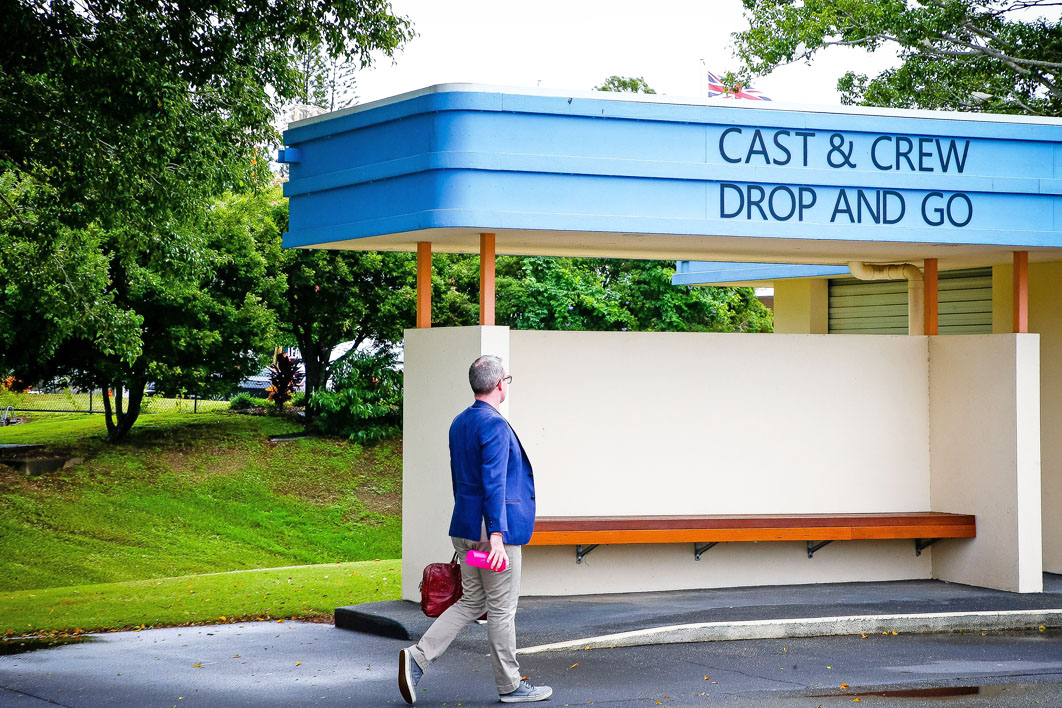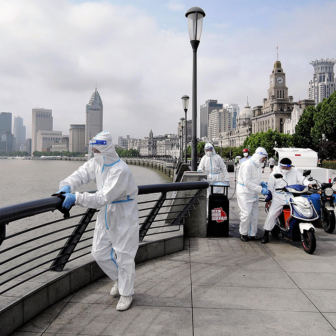The virus hit the screen sector very quickly. On 12 March Tom Hanks announced to the world that he and his wife, Rita Wilson, had tested positive for Covid-19. Hanks was in Australia to appear as Colonel Tom Parker in Baz Lurhmann’s untitled Elvis Presley biopic. Within a week, 90 per cent of the physical film production in the country was shutting down, putting thousands of cast and crew out of work.
Until that point Australia had been reaping the benefits of a worldwide boom in screen content production. Increasing demand from consumers combined with significant investment by international producers, broadcasters and streaming services had resulted in a dramatic rise in worldwide production. According to data published by the Motion Picture Association, which represents the major Hollywood studios and Netflix, global consumer spending on theatrical and home entertainment rose 31 per cent between 2014 and 2019.
Major US producers of content — from traditional broadcasters to new streaming services such as Apple+ and Disney+ — are estimated to have spent US$81 billion on new screen content, excluding sport, in 2019. Demand for studio space and experienced crew was rising in production centres in the United States, Canada, Britain and Australia.
In Australia, the production value of domestic and foreign drama increased by over 50 per cent between 2017–18 and 2018–19, according to Screen Australia, making 2018–19 a record year for Australian drama production. Like its counterparts in many countries, the Australian government provides incentives for both domestic and foreign drama production, supplementing incentives offered by the states.
The 2018 federal budget allocated $140 million over four years to the Location Incentive Program, which effectively provided an increase to the Tax Act’s location offset from 16.5 per cent to 30 per cent for eligible large-budget international productions that film in Australia from 1 July 2018. The change has so far generated $900 million in inward investment in the screen services sector across Australia.
Covid-19 has temporarily closed that pipeline. In addition to the Marvel feature Shang-Chi and the Legend of the Ten Rings, shooting in Sydney, Netflix’s Clickbait, shooting in Melbourne and Paramount’s Shantaram, shooting in Melbourne, large-budget Australian features by Baz Luhrmann and George Miller have also shut down. Ausfilm estimates that more than $700 million worth of production is on hold, with no clear idea when it might resume. And many of the thousands of cast and crew who have been stood down aren’t eligible for the JobKeeper payments because of the nature of their employment.
While large-budget international productions in Australia employ thousands of people directly, they also buy goods and services — including equipment rentals, hire cars, accommodation and travel — from a range of businesses, many of which have been hit hard by the loss of revenue. Companies have generally been able to access JobKeeper, although the use of casual staff has meant that here, too, some staff have not been eligible.
For companies providing post-production and digital visual effects, or VFX, the full effects of the pandemic aren’t yet apparent. In 2018–19 this sector generated $261 million from work on Australian and foreign drama. Internationally, the demand for VFX services has also expanded in recent years, fuelled by consumer demand for engaging, high-definition visual effects and realistic animation. This work is both labour intensive and technically complex, requiring ingenuity, artistry and innovation to produce the world-class output that Australia’s leading companies are known for. They also need sufficient bandwidth and stringent security to safeguard the intellectual property of the major US studios they do business with.
Having adapted to remote working, the post-production and VFX sector may see a further downturn in activity over the next two to six months and potentially longer, given that no physical production is taking place globally. At the moment, these companies are generally working on projects that had completed their physical production prior to the shutdowns. They face a significant lag effect even after normal film and television production activity resumes.
The VFX sector also relies on a steady stream of international artists working in Australia on temporary visas. Despite an investment in training, Australia still doesn’t have enough skilled VFX artists to meet demand. Ideally the companies can retain these workers during the downturn to ensure they are available when work picks up again. But these temporary employees are not eligible for JobKeeper or JobSeeker. Although the companies are looking to share workers where possible during this time, the process of transferring visa holders between employers is complex.
Production will start again, of course, but things won’t be the same as they were before the virus. The American film industry was barely two decades old when the 1918–20 influenza pandemic struck. Small production companies disappeared, many individually owned cinemas went out of business, and out of the chaos emerged a relatively small number of vertically integrated studio businesses that controlled most production, distribution and exhibition in the United States and expanded to fill the gap in Europe left by the first world war.
It is still too early to judge the current pandemic’s longer-term impact on the screen industry. The demand for content is clearly still there and may indeed have increased significantly during the lockdown, with streaming services reporting increases in subscriptions and usage. The closure of cinemas and the drop in box office in the first quarter — ranging from a fall of 25 per cent in North America to a fall of 97 per cent in China — has hit the profitability of theatrical exhibition.
Can the theatrical window, which keeps films away from home entertainment for ninety days from their first release, survive in the long term? While some big tentpole releases, such as the next James Bond film, have been moved to later in the year, some scheduled theatrical releases have gone straight to premium video-on-demand while cinemas are closed. Not surprisingly, theatre owners are anxious about the future of exhibition.
The first big question is how and when production will resume. With Neighbours resuming production in Melbourne and a US feature film, Children of the Corn, having continued shooting in Sydney through the lockdown, the industry is paying attention to Australia. Netflix reports it is shooting in Iceland and Korea, and a US feature film finished shooting in Latvia during that nation’s lockdown.
The two health-and-safety preconditions to resume filming are a manageable or preferably zero rate of infection in the community and safety protocols that change the way physical production is undertaken. On set, these practices will naturally include social distancing, masks, disinfecting of equipment, limited numbers of cast and crew, some quarantining and the creation of a new senior staff position to manage all aspects of health and safety. The process of filmmaking will change significantly and will undoubtedly be more expensive. What isn’t clear, yet, is how complex action shots or more intimate scenes can be photographed in a way that doesn’t expose cast members to unnecessary risk.
The lifting of international travel restrictions will play an important role in restarting domestic and foreign production in Australia. The federal government has made clear that international travel, particularly for tourism, will be the last industry to be freed up. In the short term, though, the Border Force Commissioner is now able to grant exceptions for key personnel to enter the country safely while observing the appropriate quarantine controls, which means production could well resume sooner than expected.
The screen sector is in a unique position to help with the national economic recovery. Productions can employ a lot of people quickly, generating income and stimulating consumption. International production is a critical part of the Australian screen industry — it drives significant international investment and creates thousands of Australian jobs. Between 2014–15 and 2018–19 foreign production generated nearly $2 billion in foreign investment in physical production, post-production and VFX. When the projects that went into hiatus or were committed over the next 18 months get going, around 12,000 jobs will be on offer.
This offers a pathway to recovery and also an opportunity for Australia to consolidate its position as an international production hub. Just as Tom Hanks’ announcement of his illness marked the beginning of the impact of the virus on the screen sector, so too will his return to work in Australia mark a return to a version of normality. But, as Hanks said recently to a graduation class at Wright State University “part of your lives will forever be identified as ‘before.’” Indeed, what we did in the screen sector before the virus will not be the same as what we do after, but it could well be better and more exciting. •




